Can’t Nobody Tell Me Nothin: Respectability and The Produced Voice in Lil Nas X’s “Old Town Road”
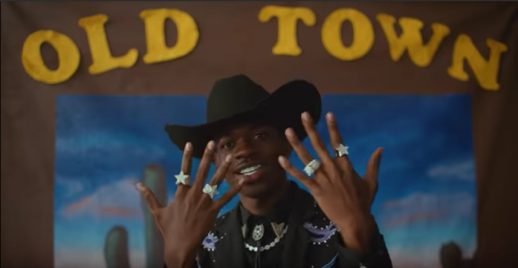
It’s been ten weeks now that we’ve all been kicking back in our Wranglers. allowing Lil Nas X’s infectious twang in “Old Town Road” to shower us in yeehaw goodness from its perch atop the Billboard Hot 100. Entrenched as it is on the pop chart, though, “Old Town Road”’s relationship to Billboard got off to a shaky start, first landing on the Hot Country Songs list only to be removed when the publication determined the hit “does not embrace enough elements of today’s country music to chart in its current version.” There’s a lot to unpack in a statement like that, and folks have been unpacking it quite consistently, especially in relation to notions of genre and race (in addition to Matthew Morrison’s recommended reads, I’d add Karl Hagstrom-Miller’s Segregating Sound, which traces the roots of segregated music markets). Using the context of that ongoing discussion about genre and race, I’m listening here to a specific moment in “Old Town Road”— the line “can’t nobody tell me nothin”—and the way it changes from the original version to the Billy Ray Cyrus remix. Lil Nas X uses the sound of his voice in this moment to savvily leverage his collaboration with a country music icon, and by doing so subtly drawing out the respectability politics underlying Billboard’s racialized genre categorization of his song.
After each of Lil Nas X’s two verses in the original “Old Town Road,” we hear the refrain “can’t nobody tell me nothin.” The song’s texture is fairly sparse throughout, but the refrains feature some added elements. The 808-style kick drum and rattling hihats continue to dominate the soundscape, but they yield just enough room for the banjo sample to come through more clearly than in the verse, and it plucks out a double-time rhythm in the refrain. The vocals change, too, as Lil Nas X performs a call-and-response with himself. The call, “can’t nobody tell me nothin,” is center channel, just as his voice has been throughout the verse, but the response, “can’t tell me nothin,” moves into the left and right speaker, a chorus of Lil Nas X answering the call. Listen closely to these vocals, and you’ll also hear some pitch correction. Colloquially known as “autotune,” this is an effect purposely pushed to extreme limits to produce garbled or robotic vocals and is a technique most often associated with contemporary hip hop and R&B. Here, it’s applied to this melodic refrain, most noticeably on “nothin” in the call and “can’t” in the response,
After Billboard removed the song from the Hot Country chart in late March, country star Billy Ray Cyrus tweeted his support for “Old Town Road,” and by early April, Lil Nas X had pulled him onto the remix that would come to dominate the Hot 100. The Cyrus remix is straightforward: Cyrus takes the opening chorus, then Lil Nas X’s original version plays through from the first verse to the last chorus, at which point Cyrus tacks on one more verse and then sings the hook in tandem with Lil Nas X to close the song. Well, it’s straightforward except that, while Lil Nas X’s material sounds otherwise unaltered from the original version, the pitch correction is smoothed out so that the garble from the previous version is gone.
In order to figure out what happened to the pitch correction from the first to second “Old Town Road,” I’m bringing in a conceptual framework I’ve been tinkering with the last couple of years: the produced voice. Within this framework, all recorded voices are produced in two specific ways: 1) everyone performs their bodies in relation to gender, race, ability, sex, and class norms, and 2) everyone who sings on record has their voice altered or affected with various levels of technology. To think about a produced voice is to think about how voices are shaped by recording technologies and social technologies at the same time. Listening to the multiple versions of “Old Town Road” draws my attention specifically to the always collaborative nature of produced voices.
In performativity terms—and here Judith Butler’s idea in “Performative Acts and Gender Constitution: An Essay in Phenomenology and Feminist Theory” that “one is not simply a body, but, in some very key sense, one does one’s body” (521) is crucial—a collaboratively produced voice is a little nebulous, as it’s not always clear who I’m collaborating with to produce my voice. Sometimes I can (shamefully, I assure you) recognize myself changing the way my voice sounds to fit into some sort of, say, gendered norm that my surroundings expect. As a white man operating in a white supremacist, cisheteropatriarchal society, the deeper my voice sounds, the more authority adheres to me. (Well, only to a point, but that’s another essay). Whether I consciously or subconsciously make my voice deeper, I am definitely involved in a collaboration, as the frequency of my voice is initiated in my body but dictated outside my body. Who I’m collaborating with is harder to establish – maybe it’s the people in the room, or maybe my produced voice and your listening ears (read Jennifer Stoever’s The Sonic Color Line for more on the listening ear) are all working in collaboration with notions of white masculine authority that have long-since been baked into society by teams of chefs whose names we didn’t record.
In studio production terms, a voice’s collaborators are often hard to name, too, but for different reasons. For most major label releases, we could ask who applied the effects that shaped the solo artist’s voice, and while there’s a specific answer to that question, I’m willing to bet that very few people know for sure. Even where we can track down the engineers, producers, and mix and master artists who worked on any given song, the division of labor is such that probably multiple people (some who aren’t credited anywhere as having worked on the song) adjusted the settings of those vocal effects at some point in the process, masking the details of the collaboration. In the end, we attribute the voice to a singular recording artist because that’s the person who initiated the sound and because the voice circulates in an individualistic, capitalist economy that requires a focal point for our consumption. But my point here is that collaboratively produced voices are messy, with so many actors—social or technological—playing a role in the final outcome that we lose track of all the moving pieces.
Not everyone is comfortable with this mess. For instance, a few years ago long-time David Bowie producer Tony Visconti, while lamenting the role of technology in contemporary studio recordings, mentioned Adele as a singer whose voice may not be as great as it is made to sound on record. Adele responded by requesting that Visconti suck her dick. And though the two seemed at odds with each other, they were being equally disingenuous: Visconti knows that every voice he’s produced has been manipulated in some way, and Adele, too, knows that her voice is run through a variety of effects and algorithms that make her sound as epically Adele as possible. Visconti and Adele align in their desire to sidestep the fundamental collaboration at play in recorded voices, keeping invisible the social and political norms that act on the voice, keeping inaudible the many technologies that shape the voice.
Propping up this Adele-Visconti exchange is a broader relationship between those who benefit from social gender/race scripts and those who benefit from masking technological collaboration. That is, Adele and Visconti both benefit, to varying degrees, from their white femininity and white masculinity, respectively; they fit the molds of race and gender respectability. Similarly, they both benefit from discourses surrounding respectable music and voice performance; they are imbued with singular talent by those discourses. And on the flipside of that relationship, where we find artists who have cultivated a failure to comport with the standards of a respectable singing voice, we’ll also find artists whose bodies don’t benefit from social gender/race scripts: especially Black and Brown artists—non-binary, women, and men. Here I’m using “failure” in the same sense Jack Halberstam does in The Queer Art of Failure, where failing is purposeful, subversive. To fail queerly isn’t to fall short of a standard you’re trying to meet; it’s to fall short of a standard you think is bullshit to begin with. This kind of failure would be a performance of non-conformity that draws attention to the ways that systemic flaws – whether in social codes or technological music collaborations – privilege ways of being and sounding that conform with white feminine and white masculine aesthetic standards. To fail to meet those standards is to call the standards into question.
So, because respectably collaborating a voice into existence involves masking the collaboration, failing to collaborate a voice into existence would involve exposing the process. This would open up the opportunity for us to hear a singer like Ma$e, who always sings and never sings well, as highlighting a part of the collaborative vocal process (namely pitch correction, either through training or processing the voice) by leaving it out. To listen to Ma$e in terms of failed collaboration is to notice which collaborators didn’t do their work. In Princess Nokia’s doubled and tripled and quadrupled voice, spread carefully across the stereo field, we hear a fully exposed collaboration that fails to even attempt to meet any standards of respectable singing voices. In the case of the countless trap artists whose voices come out garbled through the purposeful misapplication of pitch correction algorithms, we can hear the failure of collaboration in the clumsy or over-eager use of the technology. This performed pitch correction failure is the sound I started with, Lil Nas X on the original lines “can’t nobody tell me nothin.” It’s one of the few times we can hear a trap aesthetic in “Old Town Road,” outside of its instrumental.
In each of these instances, the failure to collaborate results in the failure to achieve a respectably produced voice: a voice that can sing on pitch, a voice that can sing on pitch live, a voice that is trained, a voice that is controlled, a voice that requires no intervention to be perceived as “good” or “beautiful” or “capable.” And when respectable vocal collaboration further empowers white femininity or white masculinity, failure to collaborate right can mean failing in a system that was never going to let you pass in the first place. Or failing in a system that applies nebulous genre standards that happen to keep a song fronted by a Black artist off the country charts but allow a remix of the same song to place a white country artist on the hip hop charts.
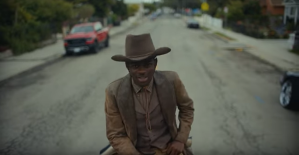 The production shift on “can’t nobody tell me nothin” is subtle, but it brings the relationship between social race/gender scripts and technological musical collaboration into focus a bit. It isn’t hard to read “does not embrace enough elements of today’s country music” as “sounds too Black,” and enough people called bullshit on Billboard that the publication has had to explicitly deny that their decision had anything to do with race. Lil Nas X’s remix with Billy Ray Cyrus puts Billboard in a really tricky rhetorical position, though. Cyrus’s vocals—more pinched and nasally than Lil Nas X’s, with more vibrato on the hook (especially on “road” and “ride”), and framed without the hip hop-style drums for the first half of his verse—draw attention to the country elements already at play in the song and remove a good deal of doubt about whether “Old Town Road” broadly comports with the genre. But for Billboard to place the song back on the Country chart only after white Billy Ray Cyrus joined the show? Doing so would only intensify the belief that Billboard’s original decision was racially motivated. In order for Billboard to maintain its own colorblind respectability in this matter, in order to keep their name from being at the center of a controversy about race and genre, in order to avoid being the publication believed to still be divvying up genres primarily based on race in 2019, Billboard’s best move is to not move. Even when everyone else in the world knows “Old Town Road” is, among other things, a country song, Billboard’s country charts will chug along as if in a parallel universe where the song never existed.
The production shift on “can’t nobody tell me nothin” is subtle, but it brings the relationship between social race/gender scripts and technological musical collaboration into focus a bit. It isn’t hard to read “does not embrace enough elements of today’s country music” as “sounds too Black,” and enough people called bullshit on Billboard that the publication has had to explicitly deny that their decision had anything to do with race. Lil Nas X’s remix with Billy Ray Cyrus puts Billboard in a really tricky rhetorical position, though. Cyrus’s vocals—more pinched and nasally than Lil Nas X’s, with more vibrato on the hook (especially on “road” and “ride”), and framed without the hip hop-style drums for the first half of his verse—draw attention to the country elements already at play in the song and remove a good deal of doubt about whether “Old Town Road” broadly comports with the genre. But for Billboard to place the song back on the Country chart only after white Billy Ray Cyrus joined the show? Doing so would only intensify the belief that Billboard’s original decision was racially motivated. In order for Billboard to maintain its own colorblind respectability in this matter, in order to keep their name from being at the center of a controversy about race and genre, in order to avoid being the publication believed to still be divvying up genres primarily based on race in 2019, Billboard’s best move is to not move. Even when everyone else in the world knows “Old Town Road” is, among other things, a country song, Billboard’s country charts will chug along as if in a parallel universe where the song never existed.
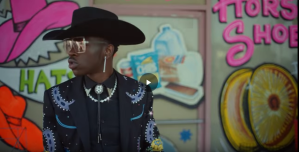 As Lil Nas X shifted Billboard into a rhetorical checkmate with the release of the Billy Ray Cyrus remix, he also shifted his voice into a more respectable rendition of “can’t nobody tell me nothin,” removing the extreme application of pitch correction effects. This seems the opposite of what we might expect. The Billy Ray Cyrus remix is defiant, thumbing its nose at Billboard for not recognizing the countryness of the tune to begin with. Why, in a defiant moment, would Lil Nas X become more respectable in his vocal production? I hear the smoothed-out remix vocals as a palimpsest, a writing-over that, in the traces of its editing, points to the fact that something has been changed, therefore never fully erasing the original’s over-affected refrain. These more respectable vocals seem to comport with Billboard’s expectations for what a country song should be, showing up in more acceptable garb to request admittance to the country chart, even as the new vocals smuggle in the memory of the original’s more roboticized lines.
As Lil Nas X shifted Billboard into a rhetorical checkmate with the release of the Billy Ray Cyrus remix, he also shifted his voice into a more respectable rendition of “can’t nobody tell me nothin,” removing the extreme application of pitch correction effects. This seems the opposite of what we might expect. The Billy Ray Cyrus remix is defiant, thumbing its nose at Billboard for not recognizing the countryness of the tune to begin with. Why, in a defiant moment, would Lil Nas X become more respectable in his vocal production? I hear the smoothed-out remix vocals as a palimpsest, a writing-over that, in the traces of its editing, points to the fact that something has been changed, therefore never fully erasing the original’s over-affected refrain. These more respectable vocals seem to comport with Billboard’s expectations for what a country song should be, showing up in more acceptable garb to request admittance to the country chart, even as the new vocals smuggle in the memory of the original’s more roboticized lines.
While the original vocals failed to achieve respectability by exposing the recording technologies of collaboration, the remix vocals fail to achieve respectability by exposing the social technologies of collaboration, feigning compliance and daring its arbiter to fail it all the same. The change in “Old Town Road”’s vocals from original to remix, then, stacks collaborative exposures on top of one another as Lil Nas X reminds the industry gatekeepers that can’t nobody tell him nothin, indeed.
_
Featured image, and all images in this post: screenshots from “Lil Nas X – Old Town Road (Official Movie) ft. Billy Ray Cyrus” posted by YouTube user Lil Nas X
_
Justin aDams Burton is Assistant Professor of Music at Rider University. His research revolves around critical race and gender theory in hip hop and pop, and his book, Posthuman Rap, is available now. He is also co-editing the forthcoming (2018) Oxford Handbook of Hip Hop Music Studies. You can catch him at justindburton.com and on Twitter @j_adams_burton. His favorite rapper is one or two of the Fat Boys.
_
 REWIND! . . .If you liked this post, you may also dig:
REWIND! . . .If you liked this post, you may also dig:
Vocal Anguish, Disinformation, and the Politics of Eurovision 2016-Maria Sonevytsky
Cardi B: Bringing the Cold and Sexy to Hip Hop-Ashley Luthers
“To Unprotect and Subserve”: King Britt Samples the Sonic Archive of Police Violence-Alex Werth
The Problem of Alan Lomax, or The Necessity of Talking Politics During the Lomax Year

 This week, Sounding Out! kicks off an exciting four-part series exploring the work of Alan Lomax, a key figure in sound culture studies, and one whose legacy is in the midst of being reconsidered and refreshed by many scholars, musicians and folklorists alike.
This week, Sounding Out! kicks off an exciting four-part series exploring the work of Alan Lomax, a key figure in sound culture studies, and one whose legacy is in the midst of being reconsidered and refreshed by many scholars, musicians and folklorists alike.
As Guest Editor, we are happy to welcome Tanya Clement, Assistant Professor in the School of Information at the University of Texas at Austin. Clement has expertise in a wide variety of fields, from scholarly information architecture and digital literacies to modernist literature and sound studies, and she is currently helping to lead the High Performance Sound Technologies in Access and Scholarship (HiPSTAS), a project you should know about that’s using new technologies to analyze and increase access to a range of spoken word recordings.
I’ll turn it over to Clement to introduce the series, an expertly-curated set of reflections on what Lomax and his recordings have meant in the past and could mean in the future.
— Special Editor Neil Verma
—
Alan Lomax (January 31, 1915 – July 19, 2002) was an archivist, ethnomusicologist, film-maker, folklorist, oral historian, political activist, scholar, and writer and many would say he has had the single most influential impact on the preservation of global music traditions. 2015 marks his centenary and this series of posts will both celebrate and interrogate his tireless and controversial crusade to bring attention to, understand, and preserve sound culture.
Below, Mark Davidson’s piece will introduce our collection with an exploration into the Alan Lomax “branding” as either saint or sinner with a call for transparency, context, and accuracy with regard to current scholarship and repatriation efforts surrounding the recordings Lomax made over six decades of work. In his approach to Alan Lomax’s Southern-based collecting work in our second article, Parker Fishel will consider the complex practice of documenting and preserving transforming dynamic community-based traditions into static texts that Lomax and others touted as authentic. Next, Toneisha Taylor will interrogate how the Federal Writers Project Folklore and Folkways collection projects, first formed by Lomax’s father, has framed how we encounter significant recordings about Black life in the Deep South during and after slavery. Finally, Tanya Clement will explore how Lomax’s ideas about Cantometrics and the Global Jukebox resound in recent work using computers to categorize and analyze sound in the 21st Century.
By revisiting Lomax’s collecting practices and the songs Lomax collected from alternate perspectives in the context of the diverse communities affected by his work, these posts are an attempt to use Lomax’s Centenary to celebrate the enduring resonance of folk songs in our sound culture and to bring awareness to the importance and complexities of its continued preservation.
— Guest Editor Tanya Clement
—
In 1987, two years after the three hundredth anniversary of Johann Sebastian Bach’s birth, musicologist Susan McClary published a now-classic article titled “The Blasphemy of Talking Politics during the Bach Year,” in which she reflected on her experiences at a number of Bach events in 1985. Using Theodor Adorno’s 1950 essay “Bach Defended against His Devotees” (written on the two-hundredth anniversary of the composer’s death) as a jumping-off point, McClary defied Bach scholars who viewed the German Baroque master’s music as sacrosanct and unimpeachable, and performed a brazen deconstruction of Bach’s most revered works: the Brandenburg Concerto No. 5 and Cantata No. 140 (“Wachet Auf”). For McClary, the turn was critical: “we must confront Bach and the canon and resituate him in such a way as to acknowledge his prominence in musical and non-musical culture while not falling victim to it (p. 60).”
What, one might ask, does a canonical “classical” music composer, a contemporary musicologist, and a twentieth-century German theorist have to do with folk music collector Alan Lomax? Aside from a heavy degree of fetishizing by pale male scholars (myself included), it turns out quite a bit.
The “Lomax Year” began on January 31, 2015, the 100th anniversary of Lomax’s birth, with events throughout the United States and Europe including concerts, marathon film screenings, and radio broadcasts devoted to his life and work. Centennial events are ongoing throughout the year, including a panel at SXSW on March 21st in Alan Lomax’s hometown of Austin, Texas.
But the current Alan Lomax revival began long before January 31. Over the course of the past five years there have been numerous books, including Lomax’s first full-length biography, websites devoted to his recordings (e.g., Louisiana, Kentucky), and recording reissues, all of which have garnered considerable attention in the popular media. There has been an ongoing film and recording series, The 78 Project, in which the project’s founders lug across the nation a vintage 1930s Presto recording machine similar to the kind Lomax would have used in search of contemporary musicians playing modern renditions of folk songs. Alan Lomax was even featured on The Colbert Report in March 2012, around the time that the massive Alan Lomax Archive of Alan Lomax’s Association for Cultural Equity (ACE) launched. The TV spot included a discussion of Lomax’s legacy and a performance by Emmylou Harris, Elvis Costello, and ACE executive director and musician Don Fleming, with Colbert helping out the proceedings.
Alan Lomax has become a brand, a larger-than-life figure looming over the entirety of folk music collecting in the United States. His name is the first on people’s lips when one mentions the subject (as I have found again and again in my own research on 1930s folk music collectors not named Alan Lomax). And he went to great pains throughout his life to promote this brand. It was, after all, the way that he was able to continue his life’s work. This branding effort continues to the present day, largely due to the efforts of the Association for Cultural Equity, which Lomax founded in 1983, and the American Folklife Center at the Library of Congress, where the Archive of American Folk Song (now the Archive of Folk Culture) is housed. Alan Lomax became the first salaried employee of the Archive in 1937, working there until 1942 when he left for the Office of War Information. But Lomax kept in close contact with the Archive for the rest of his life, lording “Ayatollah-like” (I’ve been told) over the collections he did so much to foster.
The Lomax Year has also been the impetus for a healthy reappraisal of Lomax’s life and career, as evidenced by a recent Studio 360 radio segment, produced by Richard Paul and featuring Dom Flemons, Karl Hagstrom Miller, Dwandalyn Reece, and Patricia Turner. In the 13-minute-long spot, Lomax is at once heralded as the potential grandfather of rock ’n’ roll while also criticized for the time that he and his father spent recording black prison inmates in the South, and the overall “folk construction” in which they engaged. The intervention is not unlike McClary’s call to “confront [Lomax] and the [traditional music] canon and resituate him in such a way as to acknowledge his prominence in musical and non-musical culture while not falling victim to it.”

Lightnin’ Washington, an African American prisoner, in the prison hospital at Darrington State Farm, Texas
But the “re-situation” suggested by this exposé borders on the same sort of constructed truth of which Lomax himself is accused. By listening to the segment one might come to the conclusion that Lomax had no time for any types of African American music outside of prison inmates: “It would take 14 years before Lomax ever recorded in a black church and he never recorded at a black college.” Or one might think that the Lomaxes’ quest to find “pure” or “unadulterated” versions of songs was unique. Both statements are simply not true. Alan Lomax, in his official capacity with the AAFS, worked with numerous collectors who recorded all types of music. Just one example of many is his collaboration with John Wesley Work III of Fisk University to record African American folk songs and spirituals for use by Fisk and the Library of Congress. As far as fetishizing the untouched or “pure products,” it is a practice that persists in ethnographic research to this day.
Defending Alan Lomax in this way is not a position with which I am comfortable. But relegating him to a decade of his life, and conflating him with “the sins of the father” is no better a stance. There are plenty of places where Lomax can, and should, be justly criticized. There is his practice of taking composer credits for other musicians’ performances (which he somewhat awkwardly defended in a 1990 Fresh Air interview with Terry Gross). Then there’s the instructions he gave other AAFS fieldworkers to actively deceive their informants: “The recording interview can be as significant as the song itself and is valuable as a fresh field document, especially, if the informant does not know that the interview is being recorded, and if he never learns it.” And there’s a statement he made to Federal Writers’ Project historian Jerre Mangione in which he boasted that his father was “a fucking genius at getting blacks to sing” while describing, excitedly, the dangers of recording in the Jim Crow South. Not to mention Zora Neale Hurston putting Alan Lomax in blackface as they traveled the South. And these instances all fall within this same five-year period of Lomax’s life.

Stavin’ Chain playing guitar and singing the ballad “Batson” accompanied by a musician on violin, Lafayette, La.
What falls away in these discussions is perhaps the most critical piece to this puzzle: the individuals behind the recording. Who were they, and what were their lives like outside of the three minutes that are etched into a lacquered aluminum “acetate” disc? Aside from a few notable exceptions (e.g., Muddy Waters, Jelly Roll Morton), most of these performers remain unknown to the general public. Through this particular sin of omission, we fall victim to the fallacy that perhaps Alan Lomax really was the progenitor for the “never-ending folk music revival,” or that he really was the grandfather of rock ’n’ roll. Few scholars have even approached the problem of dealing with the performers in any substantive way, with the exception of perhaps Stephen Wade through his recent book The Beautiful Music All Around Us. The problem of the individual extends to the various recent “repatriation projects” that have been underway for some years. Given what we know about Lomax’s fieldwork co-creator-credit practices, how transparent have these repatriation efforts been able to be? What do these plans include for the forthcoming “definitive Centennial box set”?
Talking politics during the Lomax Year is not blasphemy. It is necessary. But the overall reliance on knocking down Alan Lomax™ misses an important point. It is nearly impossible to make the overly simplistic and poorly nuanced argument that Lomax was simply a product of his time, when that time spanned the better part of the twentieth century and into the twenty-first. The problem of Alan Lomax, then, is acknowledging his importance while resituating him within the larger narrative of traditional music research in the twentieth century, not as a brand, but as an individual in a larger network collectors, institutions, and musicians who fought against what the rapid disappearance—what Lomax called “cultural grey-out”—of music and culture throughout the world. Doing so won’t solve the problem, but it’s at least a start.
—
Mark Davidson is a Ph.D. candidate in cultural musicology at the University of California, Santa Cruz. He is currently finishing up a dissertation on WPA folk music collections, including Sidney Robertson Cowell’s California Folk Music Project; Herbert Halpert’s Southern States Recording Expedition; and the Florida Federal Writers’ Project’s statewide folk music recording survey (which included Zora Neale Hurston and Stetson Kennedy). Mark has also been working with Tanya Clement and the Briscoe Center for American History at the University of Texas to launch a website of the Lomax family’s recordings in Texas. He received an MSIS from the UT School of Information in August 2014, and has worked for the Journal of the Society for American Music since 2008.
—
Featured image: Alan Lomax (left) youngster on board boat, during Bahamas recording expedition. All images via the Library of Congress Lomax Collection.
—
 REWIND! . . .If you liked this post, you may also dig:
REWIND! . . .If you liked this post, you may also dig:
Como Now? Marketing “Authentic” Black Music — Jennifer Stoever
Prison Music: Containment, Escape, and the Sound of America — Jeb Middlebrook
Tuning Into the “Happy Am I” Preacher: Researching the Radio Career of Elder Lightfoot Solomon Michaux
— Suzanne E. Smith

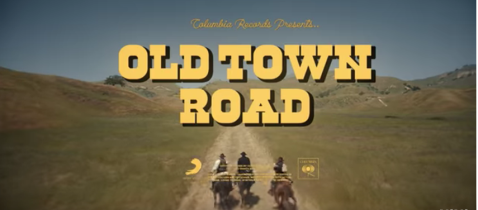

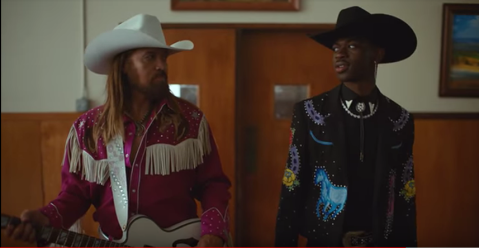


















Recent Comments